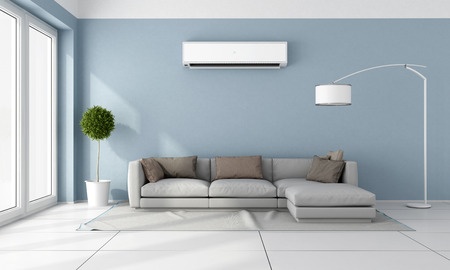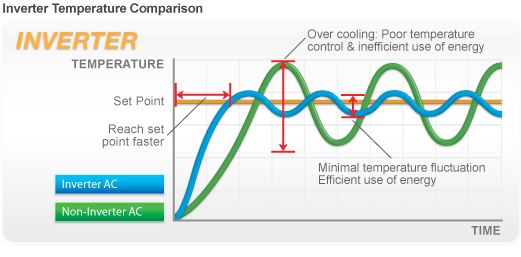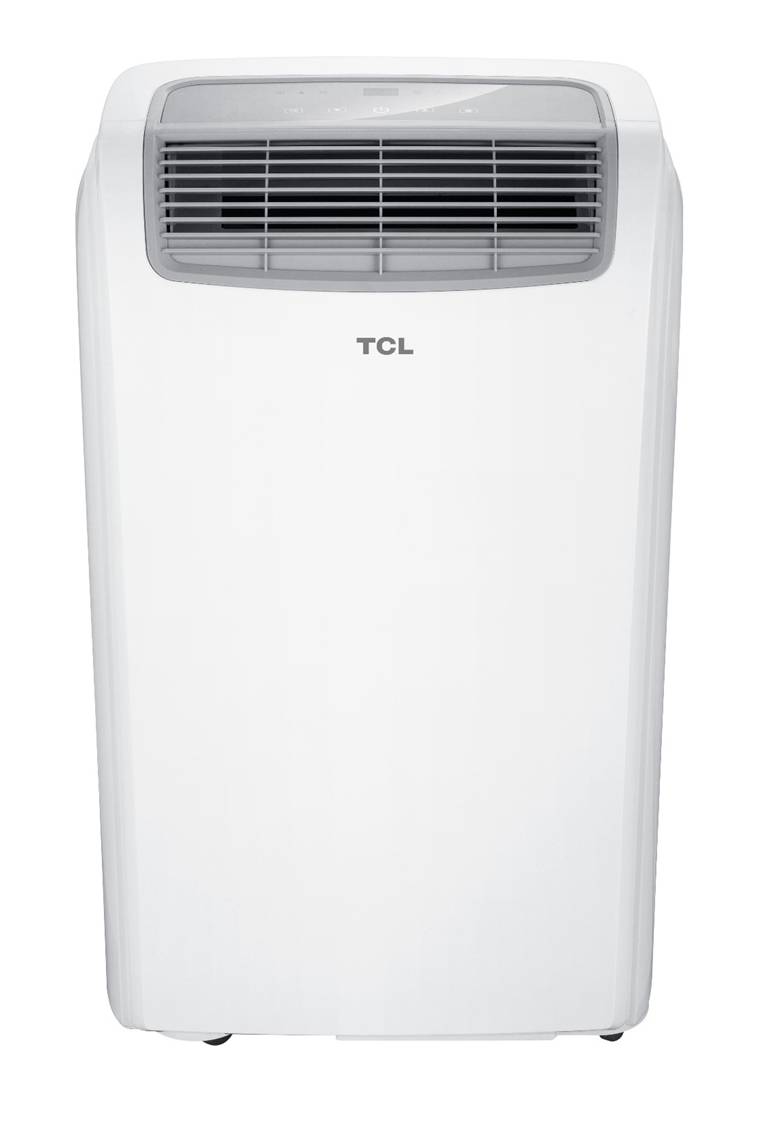Inverter Aircon Technology
 Copyright: archidea / 123RF Stock Photo
Copyright: archidea / 123RF Stock PhotoWhat is Non-inverter Aircon
Non-inverter aircon system's compressor can only operate at a single speed, its either ON (100%) or Off (0%). Therefore, when you switched ON the non-inverter aircon, you will feel that it is blowing cold air and blowing normal air the next moment. This is undesirable when comes to comfortable level. Whenever the compressor starts, it consumed 6 times more electricity compared to its running current. This frequent start/stop leads to high electrical consumption, shorten the lifespan of the compressor and high level of noise.
In the beginning, non-inverter aircon has only 1 compressor to support a few indoor fan coil units. This is very inefficient because the compressor will always run at full load regardless the number of room is used. The electrical consumption is always the same whether you switched on 1 room or 3 rooms.
When technology advanced, non-inverter aircon started to offer 2 compressors instead of 1 in the market. For example, a System 3 will have 1 x 8500Btu compressor connect to 1 room (master room) and another 12000Btu compressor connecting to 2 rooms. So when the master room is switched ON, it only runs with 1 compressor. If the other 2 rooms are switched ON, the cooling power will be shared amount the 2 room with maximum of 6000Btu each.
Even with this new design of having 2
compressors in a condenser, it is still far from perfection. As it is still a non-Inverter aircon system running at a single speed, it will still consumed
high electrical, shorten compressor lifespan, noisy and irregular of blowing cold
air. Another cons about non-inverter aircon system is that it only offers a
fixed combination of Btu for every rooms. For example, it has to be 9000Btu
split unit for all the rooms. 9000Btu split unit is only enough to cool a room
so if you want to cool a living room, you have to buy a System 1 of 18000Btu or
24000Btu.
What is Inverter Aircon
In around year 2007, inverter aircon system hit Singapore market. Inverter aircon is run by a power conversion circuit (PCB) board which is able to regulate the frequency and speed of the compressor to meet the necessary cooling load needed. Continuous improvement and precision making minimum temperature fluctuation.
 Copyright: Daikinac.com
Copyright: Daikinac.comFrom the Temperature Comparsion chart, there are 2 main points that inverter aircon is much superior in temperature control. First, the inverter AC gives a much sharper hike reaching the desired temperature much faster. Secondly, the fluctuation of the temperature is very minimal compared the non-inverter AC.
With this PCB board in
place, it helps to regulate the compressor based on the requirement from the tentant,
this help in lowering electrical bill, pro-long compressor lifespan and low
noise. It also offers the flexibility to combine different Btu for
each room. For example, System 3, 9000Btu for 1 room, 12000Btu for master room
and 18000Btu for living room. Besides that, it also came with R410A refrigerant
which cool much better compared with R22 refrigerant used in a non inverter
aircon.
Currently, inverter aircon offers
even more advanced features, such as Panasonic offers intelligent Sensors to
detect potential waste of energy giving cool air at the right place by
detecting human activity.
Summary
1) Saves Electricity.
2) Pro-long compressor life span.
3) Much quieter.
4) Minimum temperature fluctuation.
5) R410a refrigerant - Non-CFC &
Cools better.
6) Flexibility of different
combination of Btu for each room.
7) Advance features such human
detection.



